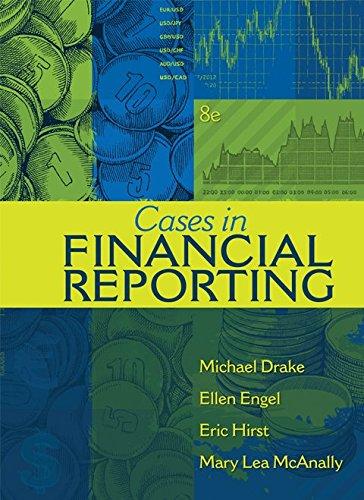Question
Problem 7-8 Yield to call Nine years ago the Templeton Company issued 20-year bonds with a 12% annual coupon rate at their $1,000 par value.
Problem 7-8 Yield to call
Nine years ago the Templeton Company issued 20-year bonds with a 12% annual coupon rate at their $1,000 par value. The bonds had a 8% call premium, with 5 years of call protection. Today Templeton called the bonds.
Compute the realized rate of return for an investor who purchased the bonds when they were issued and held them until they were called. Round your answer to two decimal places. %
Why the investor should or should not be happy that Templeton called them.
a) Since the bonds have been called, interest rates must have risen sufficiently such that the YTC is greater than the YTM. If investors wish to reinvest their interest receipts, they can now do so at higher interest rates.
b) Since the bonds have been called, interest rates must have risen sufficiently such that the YTC is greater than the YTM. If investors wish to reinvest their interest receipts, they must do so at lower interest rates.
c) Since the bonds have been called, investors will receive a call premium and can declare a capital gain on their tax returns.
d) Since the bonds have been called, investors will no longer need to consider reinvestment rate risk.
e) Since the bonds have been called, interest rates must have fallen sufficiently such that the YTC is less than the YTM. If investors wish to reinvest their interest receipts, they must do so at lower interest rates.
Problem 7-10 Current yield, capital gains yield, and yield to maturity
Pelzer Printing Inc. has bonds outstanding with 9 years left to maturity. The bonds have an 8% annual coupon rate and were issued 1 year ago at their par value of $1,000. However, due to changes in interest rates, the bond's market price has fallen to $910.40. The capital gains yield last year was -8.96%.
What is the yield to maturity? Round your answer to two decimal places. %
For the coming year, what is the expected current yield? (Hint: Refer to footnote 7 for the definition of the current yield and to Table 7.1.) Round your answer to two decimal places. % For the coming year, what is the expected capital gains yield? (Hint: Refer to footnote 7 for the definition of the current yield and to Table 7.1.) Round your answer to two decimal places. %
Will the actual realized yields be equal to the expected yields if interest rates change? If not, how will they differ?
a) As long as promised coupon payments are made, the current yield will not change as a result of changing interest rates. However, changing rates will cause the price to change and as a result, the realized return to investors should equal the YTM.
b) As long as promised coupon payments are made, the current yield will change as a result of changing interest rates. However, changing rates will cause the price to change and as a result, the realized return to investors should equal the YTM.
c) As long as promised coupon payments are made, the current yield will change as a result of changing interest rates. However, changing rates will not cause the price to change and as a result, the realized return to investors should equal the YTM.
d) As rates change they will cause the end-of-year price to change and thus the realized capital gains yield to change. As a result, the realized return to investors will differ from the YTM.
e) As long as promised coupon payments are made, the current yield will change as a result of changing interest rates. However, changing rates will cause the price to change and as a result, the realized return to investors will differ from the YTM.
Step by Step Solution
There are 3 Steps involved in it
Step: 1

Get Instant Access to Expert-Tailored Solutions
See step-by-step solutions with expert insights and AI powered tools for academic success
Step: 2

Step: 3

Ace Your Homework with AI
Get the answers you need in no time with our AI-driven, step-by-step assistance
Get Started


